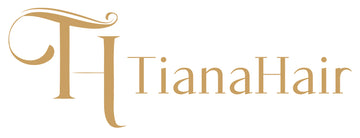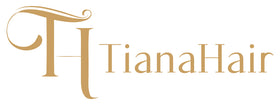Why Do Black Women Wear Wigs? Exploring the Real Reasons Behind the Trend
When you think about Black women and wigs, you might picture bold, beautiful styles on celebrities or influencers. But there’s more to it than just fashion. Wigs have become an essential part of everyday life for many Black women, offering everything from convenience to self-expression. So why do so many Black women choose to wear wigs? Let’s take a closer look at the reasons, the history, and the empowerment behind this choice.
- A Rich Cultural History
- Practical Reasons for Wearing Wigs
- Empowerment and Self-Expression
- Breaking Stereotypes
- Choosing the Right Wig
A Rich Cultural History
Wigs have deep roots in African and African-American culture. In ancient African societies, hair was a powerful symbol of identity, status, and beauty. Hair was not just about personal appearance; it also signified social roles, age, and tribe. According to the Smithsonian National Museum of African American History and Culture, elaborate hairstyles and wigs were used to express pride and celebrate individuality.

The historical use of wigs also ties back to the painful legacy of slavery, where Black women were pressured to abandon their natural hairstyles to fit into European beauty standards. As Ayana D. Byrd highlights in Hair Story: Untangling the Roots of Black Hair in America, wigs became a way to conform to societal expectations while coping with the stigma surrounding natural Black hair.
Today, wigs are a tool for self-expression and empowerment. Dr. Shirley J. Hopkinson notes that wigs allow Black women to take control of their appearance while embracing their cultural heritage. They provide both versatility and a way to protect natural hair.
Practical Reasons for Wearing Wigs
For many Black women, wigs aren’t just a fashion statement—they’re also practical. Let’s face it: managing natural hair, especially curly or textured hair, can be a lot of work. Braiding, curling, straightening, and maintaining those styles takes time, and many women simply don’t have the hours to spare. That’s where wigs come in.

Wigs, especially Glueless Wigs and Pre-everything Wigs, offer a simple and efficient way to protect natural hair while still looking stylish. They provide a break from daily styling, reducing the wear and tear on the hair. They also shield the scalp from harsh weather, keeping hair safe from sun damage or cold winds.

Glueless Wigs are easy to wear and remove, saving valuable time. Meanwhile, Pre-everything Wigs come Pre-Styled, Pre-Plucked, Pre-Cut Lace and sometimes even Pre-Bleached Knots, making them incredibly easy to wear. There’s no need for glue, no need for extra styling, and no need for a long prep time. Just slip it on, adjust it, and you’re ready to go.
Empowerment and Self-Expression
Wigs are not just about convenience—they are also about empowerment. For many women, a wig is a tool for self-expression. It’s a way to play with different styles, colors, and lengths without the permanent commitment. One day you can rock a bold blonde bob wig, and the next, you can have long, flowing gray wigs(Salt & Pepper Wig) or sleek short wigs—it’s all about how you feel.

Wigs also allow women to regain control over their appearance, especially in situations where hair loss might be an issue. Women going through chemotherapy, for instance, find comfort in wigs because they help restore a sense of normalcy and beauty during a difficult time. Headband wigs for Black women are a popular choice in these cases, as they are easy to put on and take off, offering comfort and convenience.
Breaking Stereotypes
Unfortunately, there are still stereotypes around wigs—especially the idea that wearing wigs means rejecting natural hair. But this couldn’t be further from the truth. For many Black women, wigs are just another way of embracing their beauty. It's not about hiding who they are—it’s about celebrating versatility.
Wearing a wig is a choice, not a denial of one’s natural hair. Think of it like makeup—it enhances your features, but it doesn’t erase who you are. As Mia, a 45-year-old teacher, says,
“I love my natural curls, but some days, I want a sleek, polished look. Wearing a wig doesn’t mean I’m rejecting myself; it just means I’m enjoying a different side of me.”
Choosing the Right Wig
When it comes to picking the perfect wig, there are a few things to consider. First, think about your face shape. A bob wig might be great for someone with a round face, while short wigs or headband wigs are perfect for those who need something quick and easy. Here’s a more comprehensive guide to help you choose the most flattering wig for your face shape.
| Face Shape | Best Wig Styles |
|---|---|
| Oval | Oval faces are the most versatile and can pull off almost any wig style. Long layers, bobs, and side-swept bangs work well. |
| Round | To elongate the face, opt for styles with height or longer cuts. Long, straight styles or asymmetrical bobs are perfect choices. |
| Square | Soft, wavy, or curly styles can balance angular features. A wavy bob or curly pixie cut will add volume and round out the edges. |
| Heart-Shaped | To balance a broader forehead, opt for styles that add volume around the chin, such as chin-length bobs or shoulder-length waves. |
Next, consider the texture—do you prefer human hair wigs for a more natural look, or is a synthetic wig more in line with your lifestyle and budget?

It’s all about what makes you feel comfortable and confident. Don’t be afraid to experiment with different colors too. Blonde wigs for Black women are a bold way to add variety to your look, just like gray wigs can make a striking statement. It’s your choice, and your wig should reflect your personality.
Wigs have evolved from a simple beauty tool to a powerful symbol of freedom, self-expression, and empowerment for Black women. Whether you're wearing a glueless wig, a stylish bob wig, or experimenting with a blonde wig, it’s about embracing your beauty on your own terms. Wigs allow women to protect their natural hair, express their individuality, and confidently step into any role or occasion.
At TianaHair, we celebrate this freedom of choice. No matter your style or need, there’s a wig that’s just right for you. So go ahead, explore your options, and discover the wig that helps you feel your best!
References:




Laissez un commentaire